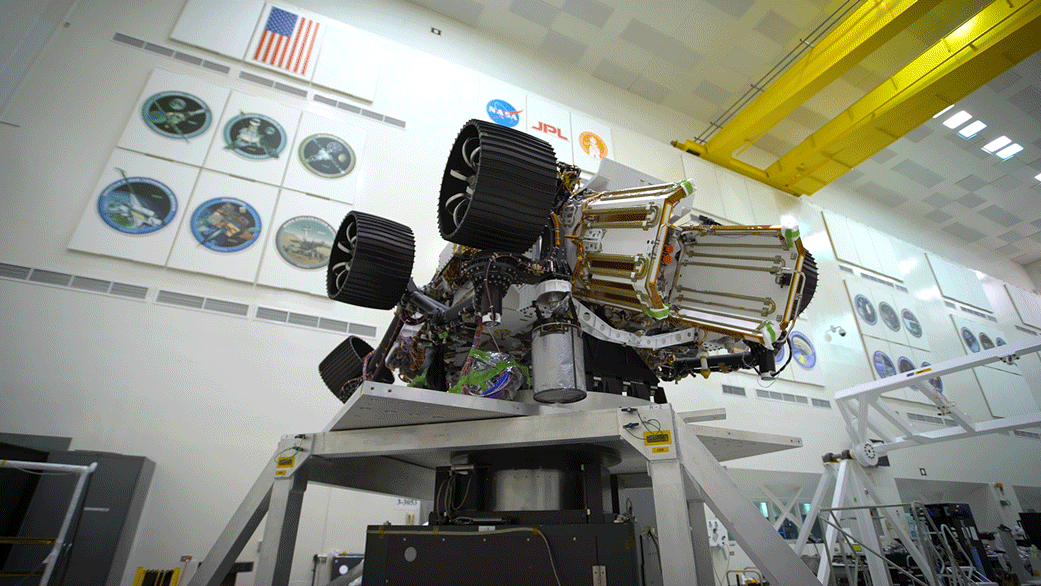Engineers took NASA’s Mars 2020 for a spin on Aug. 29, 2019. The 2,300-pound (1,040-kilogram) Martian vehicle was rotated clockwise and counterclockwise at about 1 revolution per minute on what is called a spin table in the clean room of the Spacecraft Assembly Facility at NASA’s Jet Propulsion Laboratory in Pasadena, California. (The rotation was speeded up in the video above.) The engineers were looking for the rover’s center of gravity, or the point at which weight is evenly dispersed on all sides.
Establishing the rover’s center of gravity is a key part of the assembly process and helps ensure that the spacecraft travels smoothly from launch to entry, descent and landing on Mars as calculated. Engineers can add weights in order to help balance out the vehicle. In the end, they affixed nine tungsten weights totaling 44 pounds (20 kilograms) to the rover chassis at predetermined attachment points to get the center of gravity just right.
“The spin table process is similar to how a gas station would balance a new tire before putting it on your car,” said Lemil Cordero, Mars 2020 mass properties engineer at JPL. “We rotate the rover back and forth and look for asymmetries in its mass distribution. Then, similar to your gas station putting small weights on the tire’s rim to bring it into balance, we’ll put small balance masses on the rover in specific locations to get its center of gravity exactly where we want it.”
This was the assembled rover’s first spin table test to determine its center of gravity; a second and final spin table test will occur at a NASA facility at Cape Canaveral in Florida next spring.
JPL is building and will manage operations of the Mars 2020 rover for NASA. The rover will launch on a United Launch Alliance Atlas V rocket in July 2020 from Space Launch Complex 41 at Cape Canaveral. NASA’s Launch Services Program, based at the agency’s Kennedy Space Center in Florida, is responsible for launch management.
When the rover lands at Jezero Crater on Feb. 18, 2021, it will be the first spacecraft in the history of planetary exploration with the ability to accurately retarget its point of touchdown during the landing sequence.
Charged with returning astronauts to the Moon by 2024, NASA’s Artemis lunar exploration plans will establish a sustained human presence on and around the Moon by 2028. We will use what we learn on the Moon to prepare to send astronauts to Mars.
To submit your name to travel to Mars with NASA’s 2020 mission and obtain a souvenir boarding pass to the Red Planet, go here by Sept. 30, 2019:
https://go.nasa.gov/Mars2020Pass
For more information about the mission, go to:
https://mars.nasa.gov/mars2020/
DC Agle
Jet Propulsion Laboratory, Pasadena, Calif.
818-393-9011
Alana Johnson
NASA Headquarters, Washington
202-672-4780 / 202-358-0668
2019-184



























